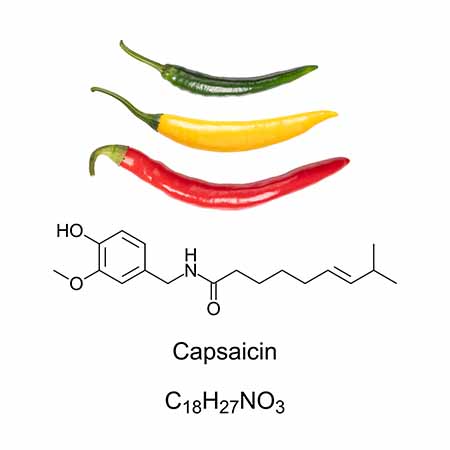New Data on Intranasal Capsaicin Therapy in Nonallergic Rhinitis
 In a small-cohort study of the therapeutic impact of intranasal capsaicin on symptoms of nonallergic rhinitis (NAR), researchers in the Department of Otorhinolaryngology at McGovern Medical School at UTHealth Houston confirmed significant improvement at one-month follow-up. This study builds on a previous randomized controlled trial by showing improvement in NAR with intranasal capsaicin in 80% of enrolled patients.
In a small-cohort study of the therapeutic impact of intranasal capsaicin on symptoms of nonallergic rhinitis (NAR), researchers in the Department of Otorhinolaryngology at McGovern Medical School at UTHealth Houston confirmed significant improvement at one-month follow-up. This study builds on a previous randomized controlled trial by showing improvement in NAR with intranasal capsaicin in 80% of enrolled patients.
“In this study, we evaluated whether the presence of local allergic rhinitis as noted by elevated local sinonasal IgE levels may be the underlying issue for the 40% who were nonresponders on the previous trial,” says Amber Luong, MD, PhD, professor and vice chair for academic affairs in the department. “The preliminary data shows no clear correlation with the presence of local allergic rhinitis and lack of symptom improvement with intranasal capsaicin treatment.”
The results were presented by Kunal Shetty, MD, a postgraduate year 4 resident who led the study, at the 2023 annual meeting of the American Academy of Otolaryngic Allergy (AAOA), which funded it.
“Dr. Shetty’s work builds on our entire ongoing program of research investigating nonallergic rhinitis using optical rhinometry to assess nasal obstruction in nasal allergen provocation testing,” Dr. Luong says. “It expands on the study led by Dr. Denna Zebda, a former resident who is now an assistant professor in our department, which demonstrated that optical rhinometry with intranasal capsaicin challenge could be a viable option for the diagnosis and treatment of nonallergic rhinitis.”
In Dr. Zebda’s study, the investigators showed that capsaicin is better than placebo for the management of nonallergic rhinitis. It objectively reduced nasal obstruction; however, 40% of participants were nonresponders at 12 weeks based on evaluation by optical rhinometry. The study led the researchers to suspect the presence of local allergic rhinitis.
“We diagnose local allergic rhinitis based on a skin test showing absence of allergic reaction,” Dr. Luong says. “Some people have allergic rhinitis and are negative on a skin test but have local nasal-elevated levels of IgE, the hallmark of allergic rhinitis. In our most recent study, we had a much higher responder rate. Eighty percent of 22 NAR patients were responders to capsaicin and only 20% were nonresponders, which is good news. Our data showed no clear correlation between responders and nonresponders with respect to IgE levels, but we are waiting for follow-up data. Also, this is a small study and may not be large enough to evaluate effectively for the correlation.
References
Zebda D, Jiang ZY, Gibson MM, Pham C, Ahmadi S, Floren S, Yao WC, Citardi MJ, Luong AU. Double-blinded randomized prospective trial of intranasal capsaicin treatment for nonallergic rhinitis. Int Forum Allergy Rhinol. 2021 Jan;11(1):24-30. doi:10.1002/air.22637. Epub 2020 Jul.
Shetty K, Hasan S, Vance D, Bankston C, Cruz G, Islam E, Ashoori F, Yao W, Citardi M, Luong A. Trial Examining the Prevalence of Local IgE Elevation and Its Effect on Intranasal Capsaicin Therapy in the Nonallergic Rhinitis Population. Presented at the 2023 American Academy of Otolaryngic Allergy annual meeting.